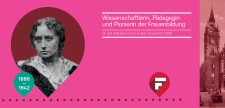Ca. 800
Foundation of a benedictine monastery with church, on the site of today's late romanesque basilica St. Ludgerus, by the first Bishop Liudger of Münster.
852
Foundation of a free and secular ladies' convent for the daughters of the Saxon high nobility at today's Burgplatz in Essen-Mitte by the later Bishop of Hildesheim, Altfrid, who is said to have been born here on "Asnidhi", his parents' country estate.
870
Completion and consecration of the first collegiate church.
Ca. 900
Writing of manuscripts in the Werden Monastery, which are regarded as being among the earliest literary texts in a Germanic language. Development of the Monastery into one of the cultural centres of the then empire.
946 - 967
Destruction of Essen cathedral by fire and reconstruction on the foundation walls that were left by the fire and still form the foundations of the present day cathedral.
971 - 1011
Period in office of the Prioress Mathilde, the first of three prioresses from the Saxon royal or imperial family, who enrich the Essen church treasures by uniquely precious objects, thus making the treasure house one of the most significant of its kind in Europe - which it still is today.
1038 - 1058
Rule of Prioress Theophanu, a granddaughter of Emperor Otto II, who extends the cathedral by the imposing west nave, still preserved without change today.
1216
In a letter by Emperor Friedrich II, the Essen prioress is for the first time designated as a ”Princess of the Realm”, a rank also accorded to the Werden Prior.
1275
Consecration of the Werden abbey church, reconstructed following two major fires, and destruction of the Essen collegiate church by fire, which is then reconstructed in the gothic style preserved until the present day.
1290
King Rudolph confirms that the Princess-Abbess has the territorial sovereignty over the town of Essen (which she had temporarily lost to the Archbishop of Cologne).
1317
First mention of coal in Essen. Initially, it is not regarded as being in any way significant.
1336
Open attempts by the Essen citizenry, to liberate themselves from the rule of the foundation and to achieve direct subordination to the emperor for their town; this was finally granted by Emperor Charles IV in 1377.
1369
Emperor Charles IV. grants the Princess-Abbess the right to extract coal.
1470
Start of gun-making in Essen.
1563
The council, which considers itself as having the local territorial sovereignty, introduces the Reformation in Essen. The market church, adjacent to the collegiate church, becomes protestant by order of the magistrate.
1620
The Essen forge already is producing 14,000 guns and pistols.
1738
The first newspaper in Essen is published with the title ”Neueste Essendische Nachrichten von Staats- und Gelehrten Sachen” (Latest Essen News on State and Learned Affairs).
1802
Prussia takes over the princedoms of Werden and Essen.
1803
The decision to abolish all religious princedoms secularizes the Foundation of Essen and Werden Monastery.
1809
With the first conveyor steam engine, Franz Dinnendahl creates the most important precondition for deep-cast coal mining.
1826
14 year old Alfred Krupp takes over the almost bankrupt cast steel works from his late father.
1829
Karl Baedeker publishes the first of his world famous travel guides that still bear his name to the present day.
1852
In the year 1000 after the establishment of the Foundation, Alfred Krupp invents the seamless wheel flange for the railways, the production of which allows the firm to grow into the largest company in the 19th century.
1864
Around 22 percent of Essen's population work in the Krupp cast steel works.
1870 - 1872
Villa Hügel, with 220 rooms, is built as a representative residence for the Krupp family.
1892
The Essen City Theatre, a gift by the industrialist Friedrich Grillo, is officially opened.
1896
With 100,000 inhabitants Essen becomes a city.
1906
Margarethe Krupp, daughter-in-law of Alfred Krupp, on the occasion of the wedding of her daughter Bertha with Gustav von Bohlen und Halbach, donates the Margarethenhöhe residential estate, which is erected in the years to follow in the style of a small German town according to plans by the architect Georg Metzendorf.
1912
The 100 year celebrations of Krupp are attended by Emperor Wilhelm II.
1913
Designed to plans of Professor Edmund Körner, the impressive synagogue is built as one of the largest Jewish meeting houses in Germany. Today, the building is used as a house of Jewish culture.
1916
First air raid on Essen (during World War I).
1918 - 1924
Period in office of Lord Mayor Dr. Hans Luther, who later becomes German Minister of Food and Agriculture, and also German Chancellor from 1925 to 1926.
1922
The Essen Kunstmuseum (art museum) is amalgamated with a bequest from the Hagen industrialist and collector Karl Ernst Osthaus, in this way creating the Museum Folkwang subsequently, the Museum Folkwang develops into one of the most significant German art museums.
1927
The School for Music, Dance, and Elocution is opened - today's renowned Folkwang College for Music, Theatre and Dance.
1929
The third and largest wave of incorporations again expands the Essen city area by eight previously independent towns, including the former religious princedom of Werden. Later - in 1970 and 1975 -, Burgaltendorf and Kettwig are also added.
1931 - 1933
Lake Baldeney, today a paradise for water sports and a recreational area for day trippers from the entire region, is created by 10,000 unemployed workers as a settling basin for suspended matter to keep the River Ruhr clean. Already in 1929, in another work creation scheme on the occasion of the "Großen RUhrländischen GArtenschau", the "GRUGA-Park" was created.
1939 - 1945
In the course of 272 air raids during World War II, 90 percemt of Essen city centre is destroyed, the remaining city area suffers 60 percent destruction.
1946 - 1949
As Lord Mayor of Essen, Dr. Gustav Heinemann - later the President of Germany - directs the reconstruction of the city.
1958
Establishment of the Bishopric of Essen, the so-called Ruhr Diocese, which comprises seven cities and two rural districts. The former collegiate church becomes the High Cathedral of the Ruhr Bishop.
1958 - 1973
The mining industry in crisis: all mines - with the exception of the Zollverein colliery - cease coal production and are mostly demolished.
1965
Federal garden show (Bundesgartenschau) in the Gruga, which is extended to 70 hectares for this occasion and turned into one of the most attractive and delightful city parks in terms of garden architecture in Germany.
1972
Essen receives its University. The former "Städtische Krankenanstalten" now form the University Clinic.
1979
The new town hall, with a height of 106 metres the highest in Germany, is opened.
1986
The last Essen mine still in production - Zollverein - is shut down but due to its outstanding significance in industrial architecture listed as a protected monument and, in subsequent years, converted into a high quality cultural centre.
1988
The Opera House built according to plans of the world famous Finnish architect Alvar Aalto is opened.
1990
Following conversion into a modern playhouse, the old Grillo-Theater is reopened.
1994
The heads of state and government from all European Union countries meet in Messe Essen. At this EU summit, the representatives from the East European countries are present for the first time as guests.
1996
The former "VIII. Mechanische Werkstatt" (VIII mechanical workshop), the gatehouse to the Krupp site, is converted and used today under the name "Colosseum" as a playhouse for musicals.
1997
The RWE tower, the new seat of the group administration, provides the Essen skyline with a highly visible landmark
1999
In Werden, the oldest district in Essen, citizens celebrate their 1200-year jubilee.





